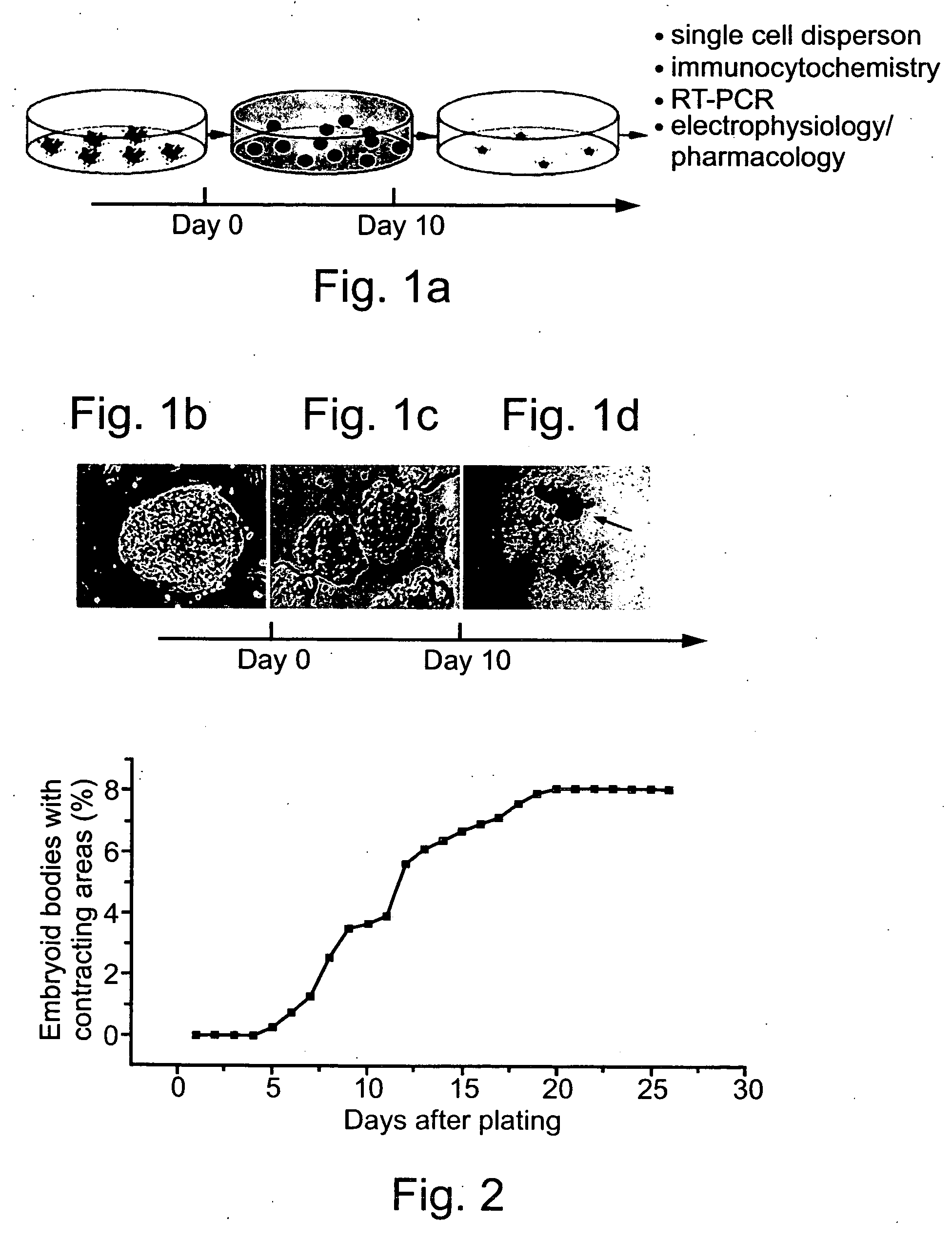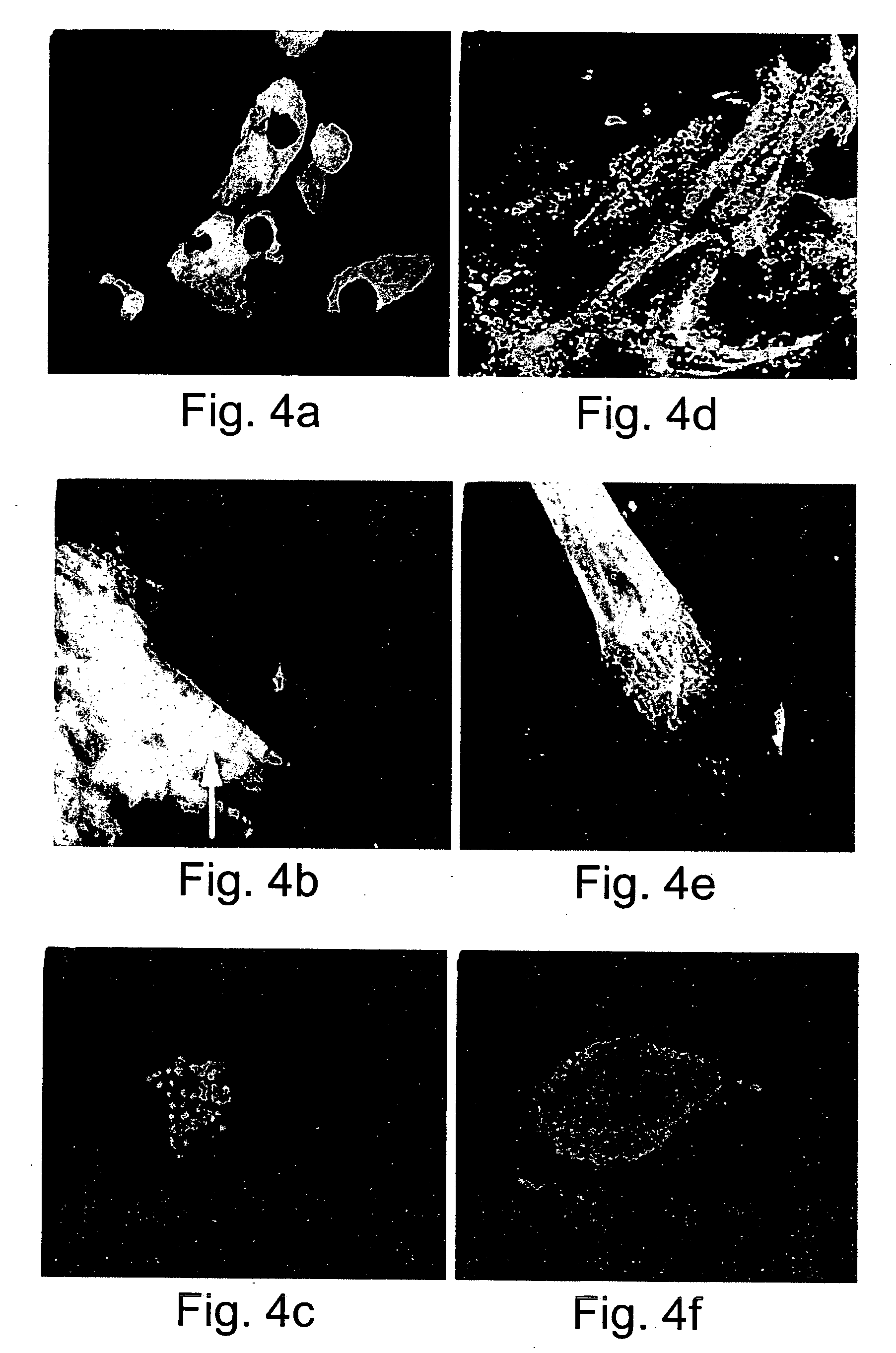Methods of generating human cardiac cells and tissues and uses thereof
a technology of applied in the field of generating human cardiac cells and tissues, can solve the problems of concomitant death and damage of cardiac tissues, wall thinning and loss of regional contractile function, ischemic heart disease,
- Summary
- Abstract
- Description
- Claims
- Application Information
AI Technical Summary
Benefits of technology
Problems solved by technology
Method used
Image
Examples
example 1
Generation of Highly Differentiated, Highly Functional Cardiomyocytic Cells Via In-Vitro Culture of Human Embryonic Stem Cells
[0260] Despite decades of intensive research, heart failure remains the primary cause of death and, to date, there do not exist satisfactory methods of generating cardiomyocytic cells which could be used therapeutically or as a satisfactory in-vitro model of cardiac development and function. Thus, in order to fulfill this critical need, the present inventors have generated for the first time in-vitro functional embryonic stem cell-derived cardiomyocytic cells, as follows.
[0261] Materials and Methods:
[0262] Generation of human embryonic stem cell-derived cardiomyocytic cells: Ten different human embryonic stem cell lines including line H9 or it single cell clonal derivative H9.2 (Amit, M. et al., 2000. Dev. Biol. 227: 271) were individually grown on a mitotically inactivated (mitomycin C) mouse embryonic fibroblast feeder cell layer in culture medium, as pr...
example 2
Generation of Highly Differentiated, Highly Functional Human Cardiomyocytic Tissue Via In-Vitro Culture of Human Embryonic Stem Cells
[0293] The ability to generate human cardiac tissue in-vitro would be of enormous benefit for therapy of heart diseases, for testing the therapeutic and toxic effects of pharmacological and electrical treatments of human cardiac tissue, and for modeling aspects of the biology of human cardiac tissue, such as cardiac tissue development and cardiac tissue physiology. However, no prior art methods of generating human cardiac tissue in-vitro exist. Thus, in order to fulfill these important needs the present inventors have generated, for the first time, highly differentiated, highly functional human cardiomyocytic tissues by in-vitro culture of human embryonic stem cells, as follows.
[0294] Materials and Methods:
[0295] Generation of humans embryonic stem cell-derived cardiomyocytic cells and tissues: Performed essentially as described in Example 1, herein...
example 3
Pacing of the Ventricle in a Complete Heart Block Model Using Cardiomyocytic Cells Generated by Cultured Human Embryonic Stem Cells
[0328] Adult heart tissue has very poor regenerative capacity and therefore any significant cell loss or dysfunction of such tissue is essentially irreversible. Many types of cardiac diseases, such as myocardial infarction, are associated with loss of cardiac tissue function, and may lead to the development of progressive heart failure. Tissue loss or dysfunction, occurring at critical sites in the conduction system of the heart, may also lead to inefficient rhythm initiation or impulse conduction. Consequentially, these processes may result in abnormally low heart rate (bradyarrhythmias) requiring the implantation of a permanent pacemaker. Cell therapy has been suggested as a novel therapy for restoration of the myocardial electromechanical functions. However, this approach is hampered by the lack of a human source for cardiac tissue, and by the absenc...
PUM
 Login to View More
Login to View More Abstract
Description
Claims
Application Information
 Login to View More
Login to View More - R&D
- Intellectual Property
- Life Sciences
- Materials
- Tech Scout
- Unparalleled Data Quality
- Higher Quality Content
- 60% Fewer Hallucinations
Browse by: Latest US Patents, China's latest patents, Technical Efficacy Thesaurus, Application Domain, Technology Topic, Popular Technical Reports.
© 2025 PatSnap. All rights reserved.Legal|Privacy policy|Modern Slavery Act Transparency Statement|Sitemap|About US| Contact US: help@patsnap.com



